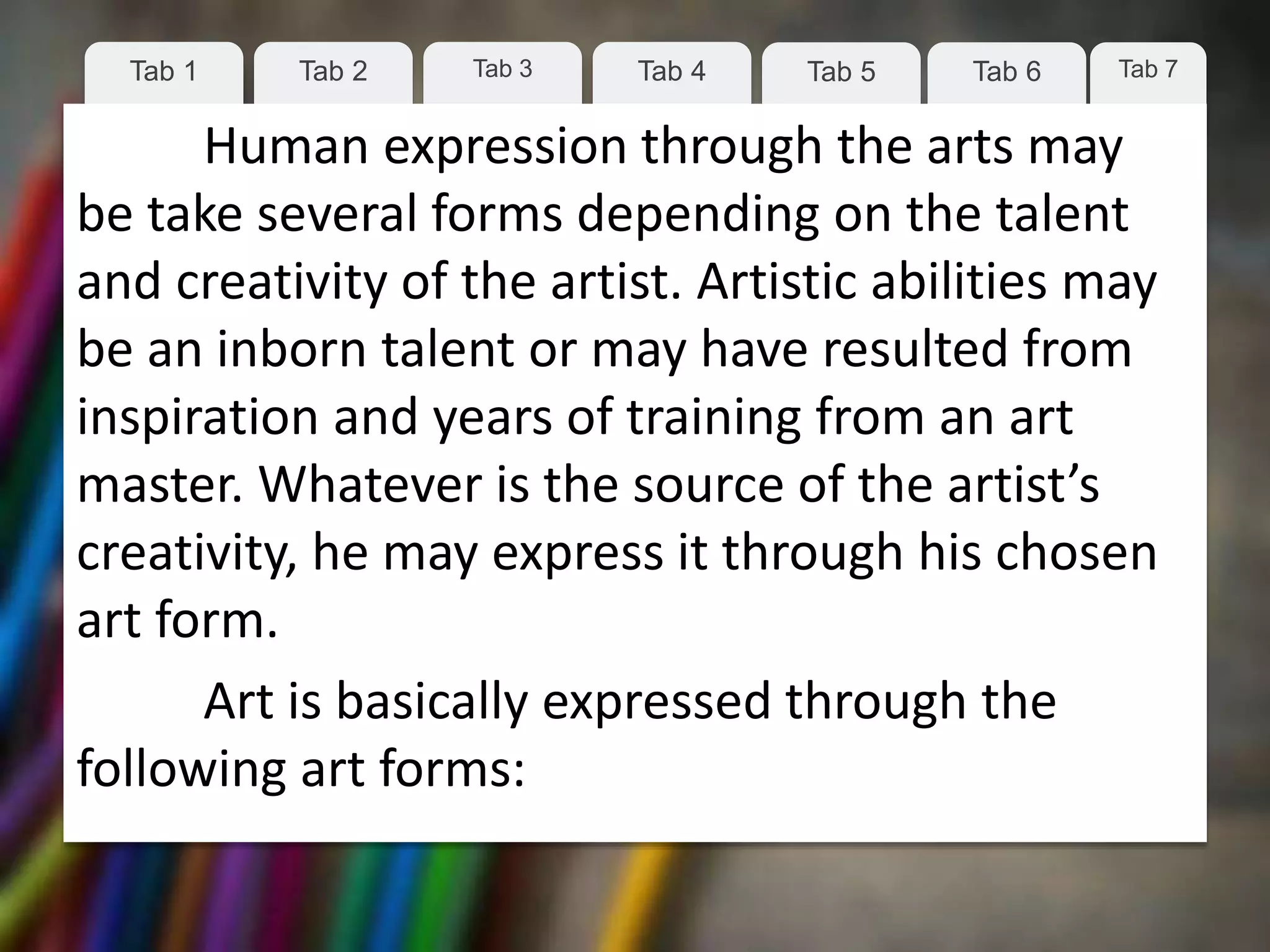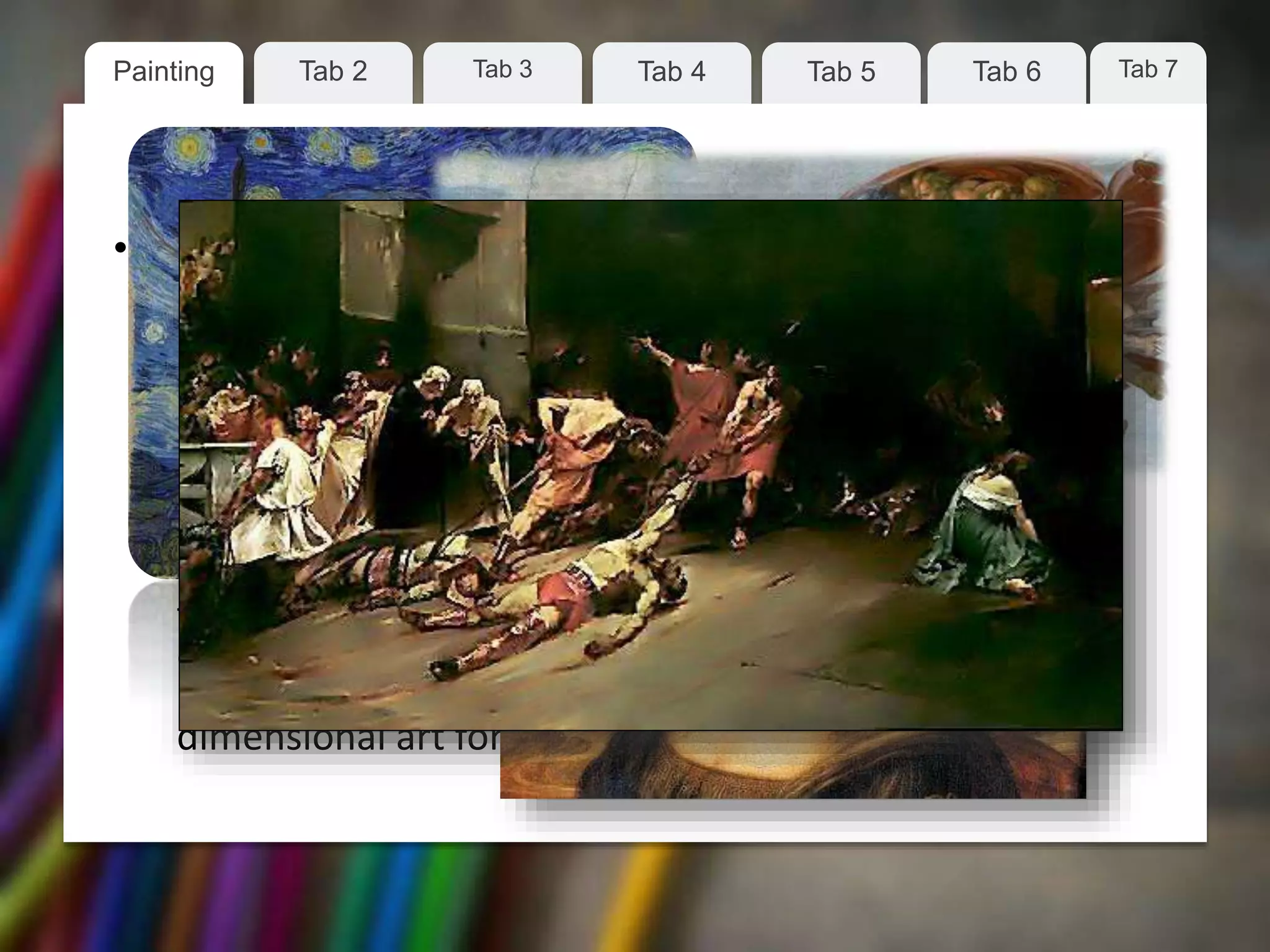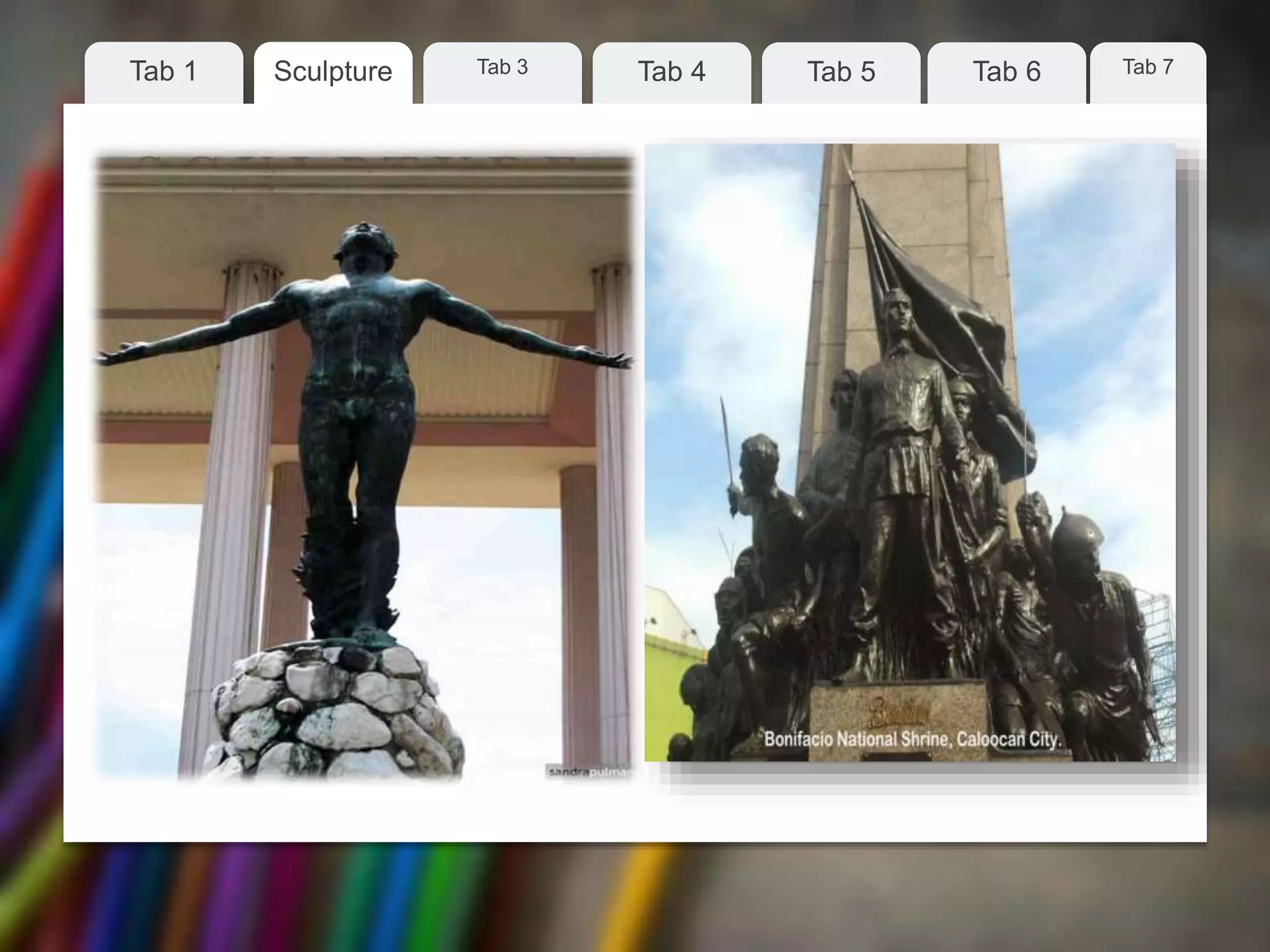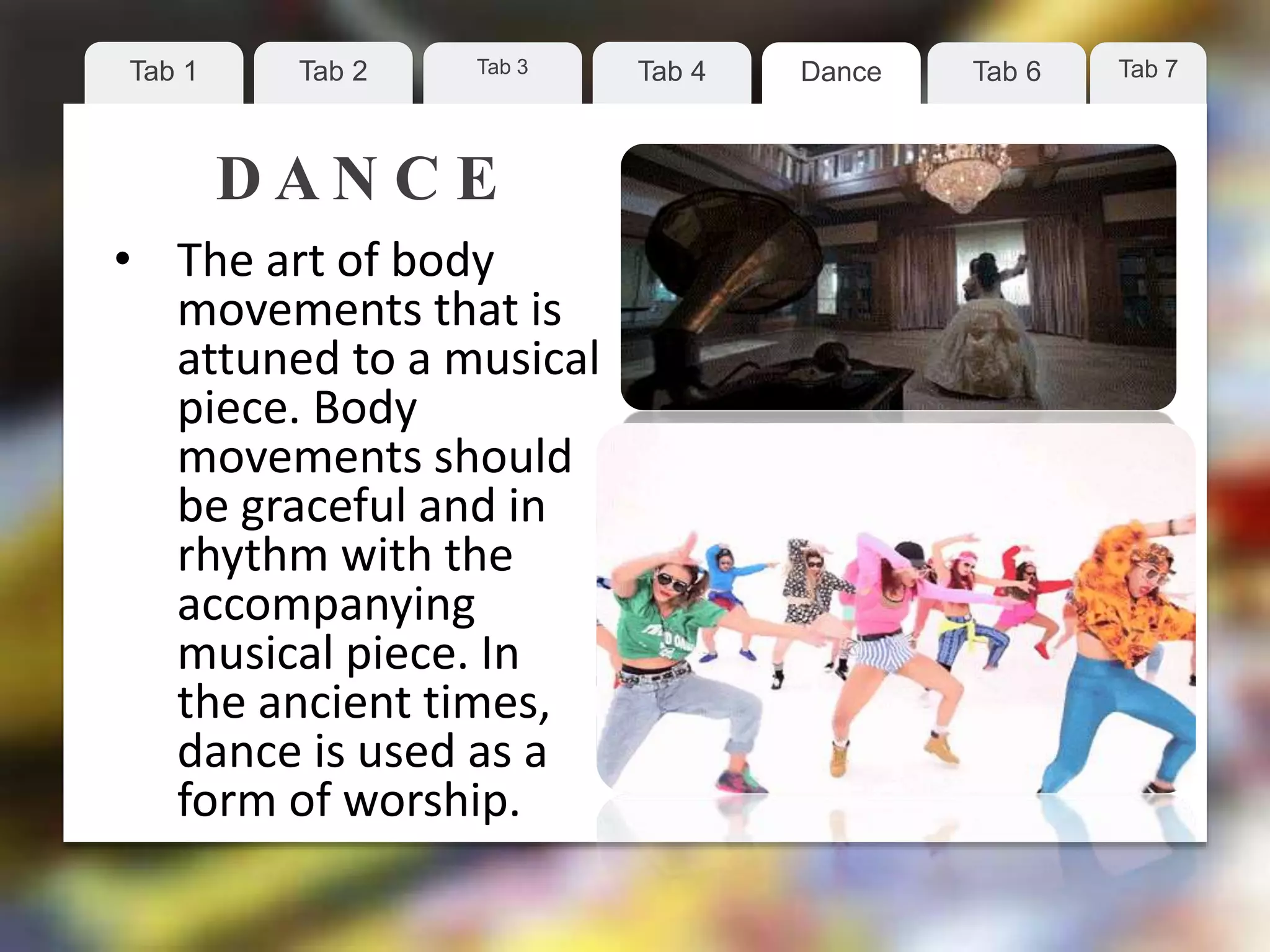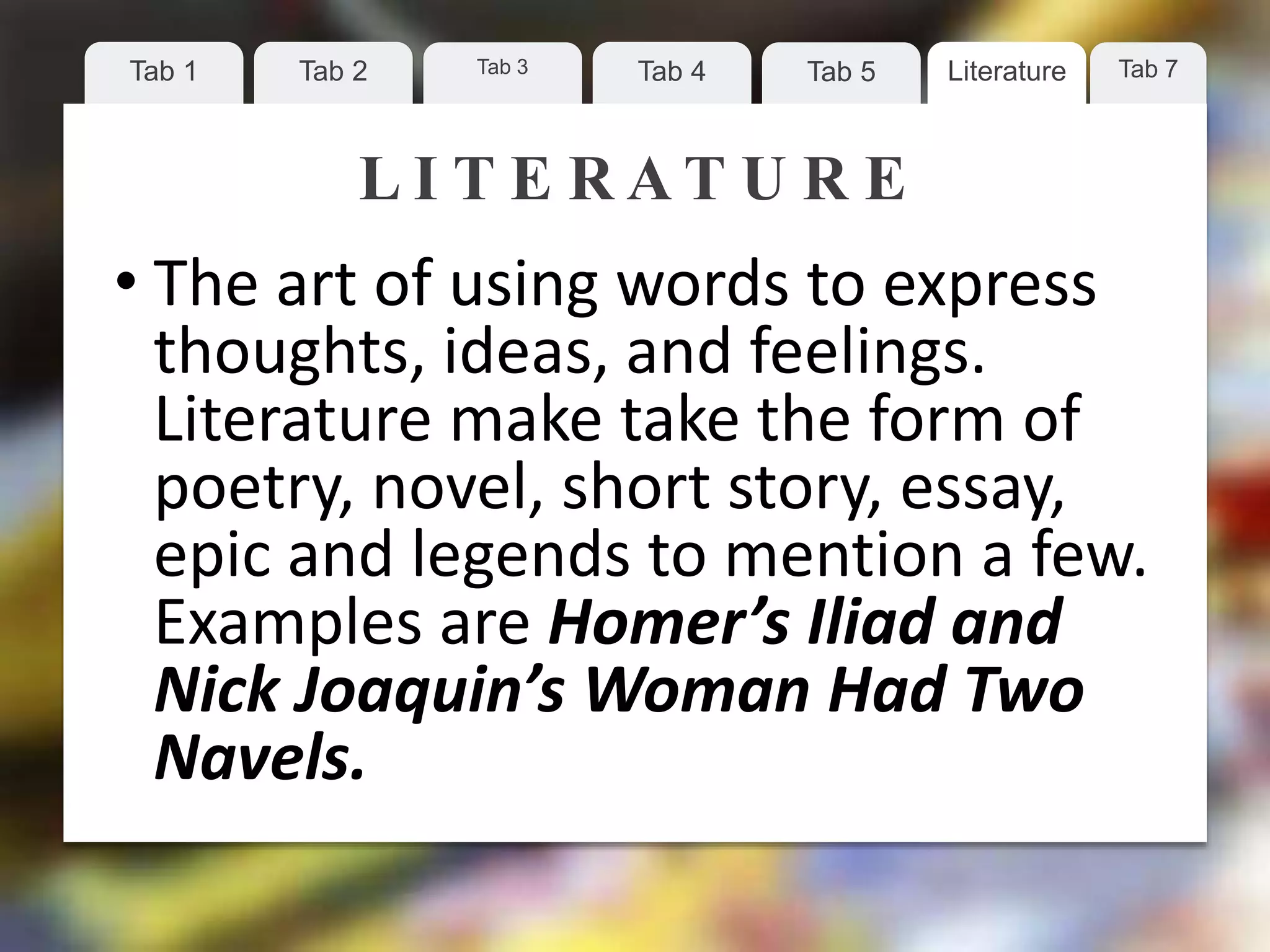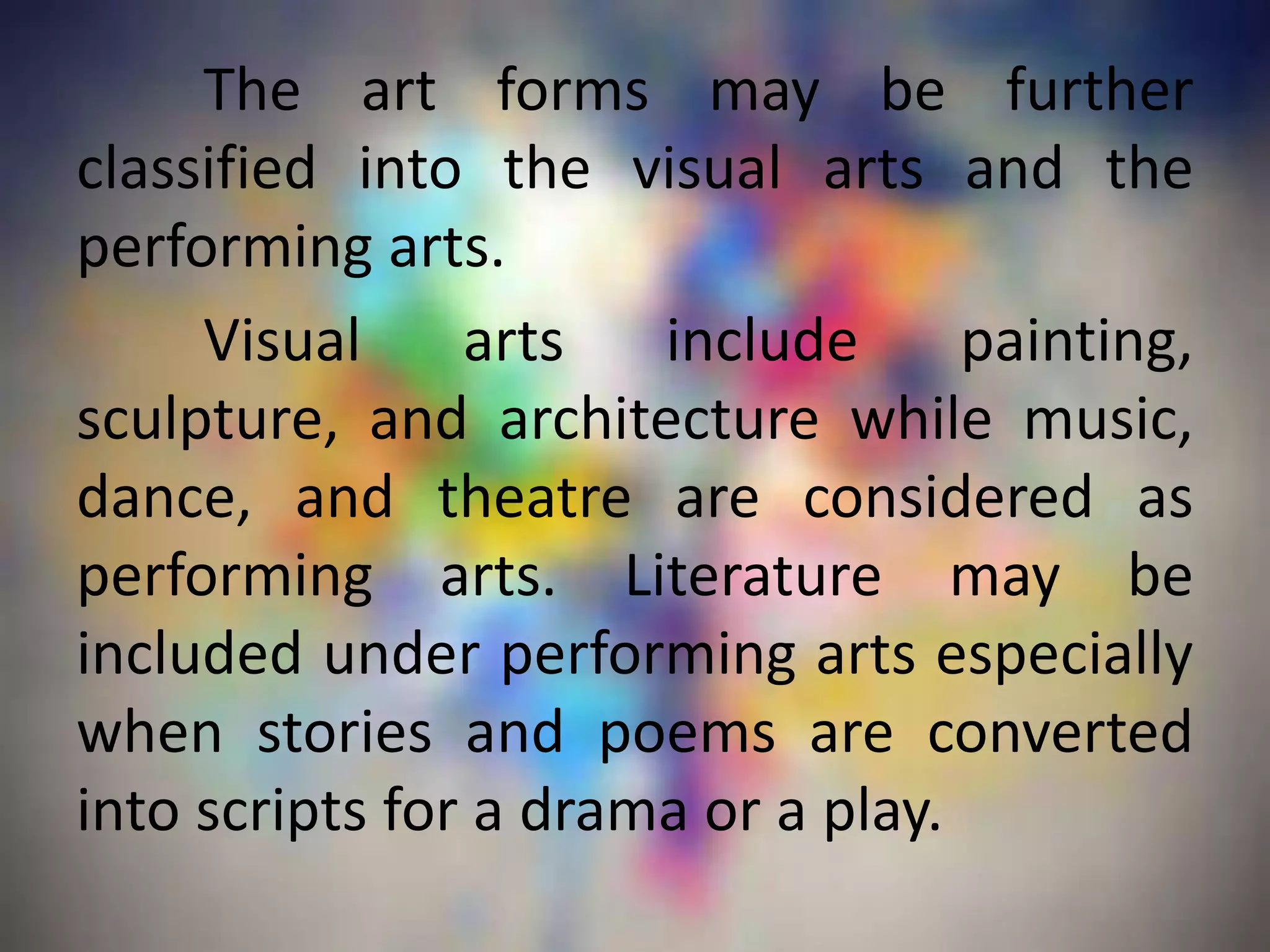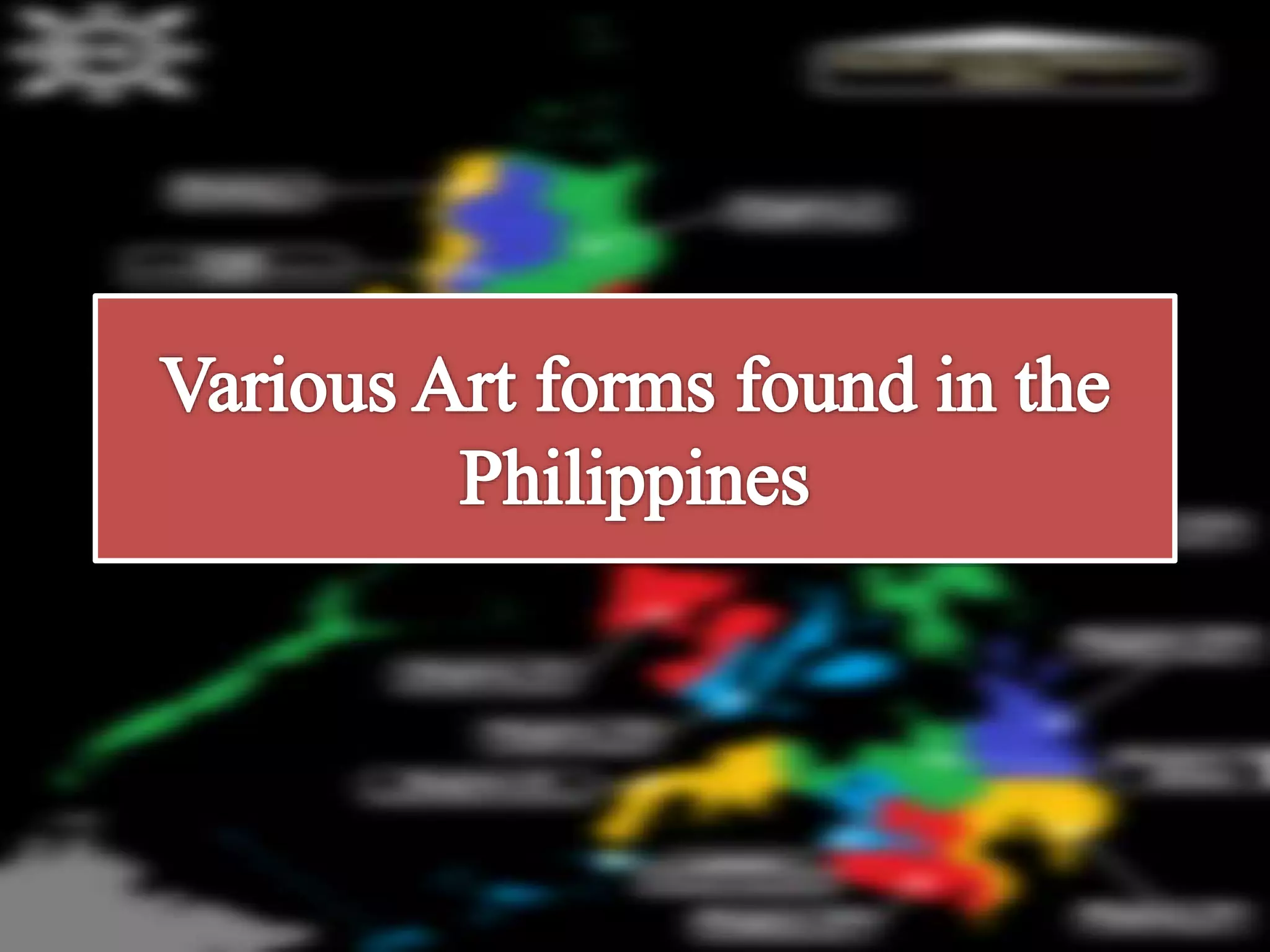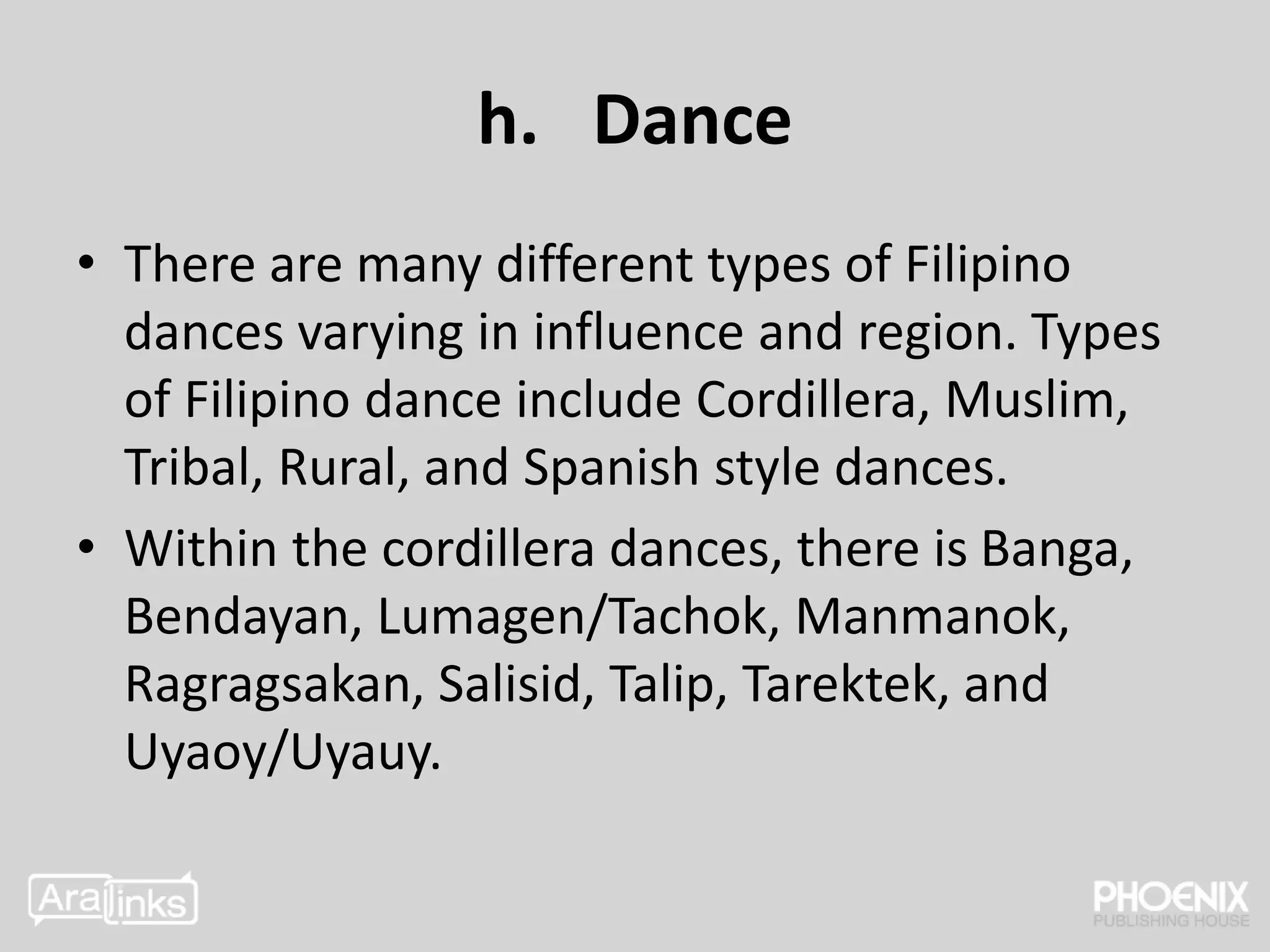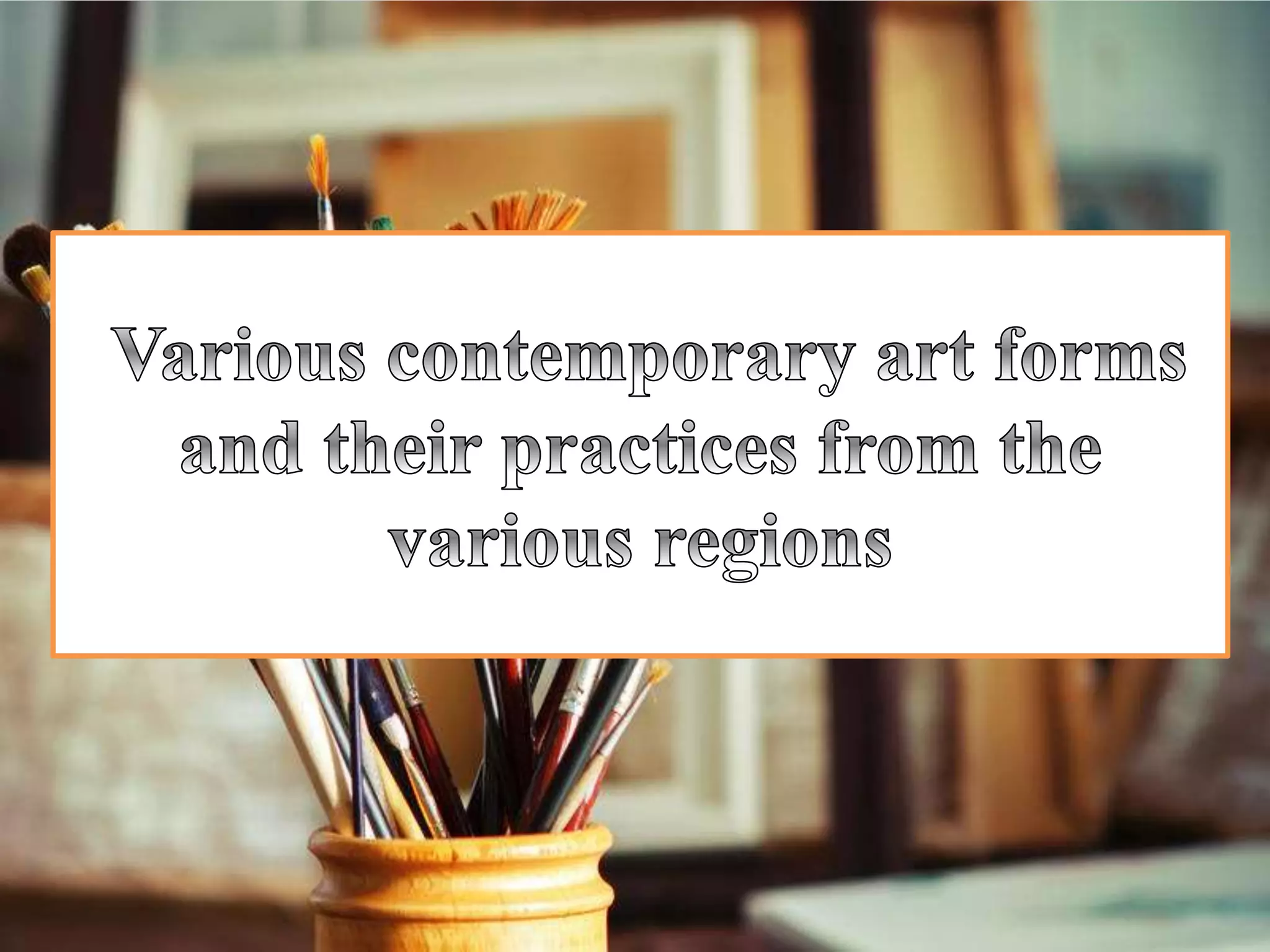The document summarizes the various art forms that have developed and been practiced in the Philippines over time, including:
1) Painting and sculpture, which were introduced by Spanish colonizers and depicted religious motifs but later included secular subjects;
2) Weaving of fibers and textiles which was an important pre-Hispanic art form using materials like abaca and cotton;
3) Architecture ranging from traditional nipa huts to masonry introduced by colonizers;
4) Literature, music, dance and theater which incorporated both indigenous and foreign influences over centuries of development.

